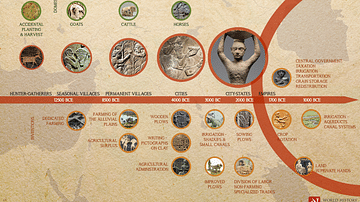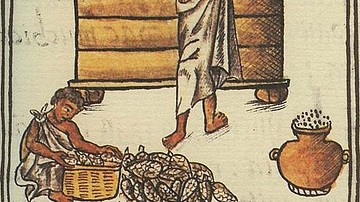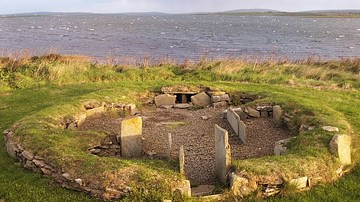Search
Search Results

Lesson Pack
Mesopotamia: Innovations & Agriculture
This lesson pack on innovations and agriculture in ancient Mesopotamia includes the following content: Two Lesson Plans The Wheel & Advancements in Agriculture Cuneiform, Literature & Libraries Additional Materials Open Questions...

Collection
Mesopotamia: Agriculture & Innovations
Ancient Mesopotamia, located in the Fertile Crescent between the Tigris and Euphrates rivers, witnessed the emergence of cities and empires primarily due to the vital role of agriculture. The rich alluvial soil and access to water sources...

Image
Agriculture in the Fertile Crescent and Mesopotamia - Timeline
A visual timeline illustrating the evolution of agriculture in parallel with invention and social development in the region of the Fertile Crescent (a term first used in 1916 by Egyptologist J.H. Breasted), enabling the establishment of cities...

Image
Aztec Agriculture
An illustration from the Florentine Codex depicting Aztecs storing maize.

Definition
First Agricultural Revolution
The First Agricultural Revolution, beginning c. 12-20,000 years ago, was characterized by the emergence of different agricultural systems in different parts of the world, whose common trait was the use of native species. Although agriculture...

Video
Commerce, Agriculture, & Slavery: Crash Course
We've been talking a lot about kings, and queens, and wars, and religious upheaval for most of this series, but let's take a moment to zoom out, and look at the ways that individuals' lives were changing in the time span we've covered so...

Definition
Neolithic Period
The term Neolithic Period refers to the last stage of the Stone Age - a term coined in the late 19th century CE by scholars which covers three different periods: Palaeolithic, Mesolithic, and Neolithic. The Neolithic period is significant...

Article
Dynamics of the Neolithic Revolution
The Neolithic Revolution began between 10,000 and 12,000 years ago at several widely dispersed locations across the world, when our ancestors first began planting and raising crops. Agricultural communities sprang up almost simultaneously...

Definition
Columbian Exchange
The Columbian exchange is a term coined by Alfred Crosby Jr. in 1972 that is traditionally defined as the transfer of plants, animals, and diseases between the Old World of Europe and Africa and the New World of the Americas. The exchange...

Definition
Stone Age
From the dawn of our species to the present day, stone-made artefacts are the dominant form of material remains that have survived to today concerning human technology. The term “Stone Age” was coined in the late 19th century CE by the Danish...